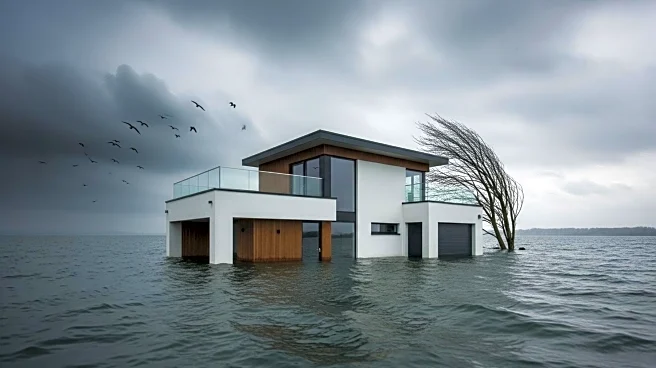What's Happening?
Burns & McDonnell, a Kansas City, Missouri-based engineering firm, has been awarded an $80 million contract to construct a new water reclamation facility in San Marcos, Texas. The facility is designed to manage the increasing wastewater demands resulting from a planned residential development in the area. The project will initially provide a capacity of 2 million gallons per day, with the potential to expand to 8 million gallons in the future. The construction will include two buildings with approximately 20,000 square feet of administrative and processing space. The firm plans to implement a fast-tracked interim wastewater management system while designing the permanent facility, with construction on interim facilities expected to begin in January 2026 and the permanent plant in the third quarter of 2026. The project is anticipated to be substantially complete by August 2028.
Why It's Important?
This project is significant as it addresses the growing demand for water infrastructure in Texas, a state facing increasing water management challenges due to rapid population growth. The facility will support the planned residential development in San Marcos, ensuring that the city can accommodate new residents without overburdening existing water resources. The project also highlights the importance of public-private partnerships in infrastructure development, as the city has entered into a cost-sharing agreement with residential developers. This collaboration is crucial for meeting the state's water needs, especially as the Texas legislature has recently approved significant funding to combat a looming water crisis.
What's Next?
Construction of the interim facilities is set to begin in January 2026, with the permanent plant construction starting in the third quarter of 2026. The project is expected to be substantially complete by August 2028. As the project progresses, stakeholders, including the City of San Marcos and residential developers, will likely monitor the construction closely to ensure it meets the growing demands of the region. The success of this project could serve as a model for similar infrastructure initiatives across Texas and other rapidly growing areas in the U.S.













